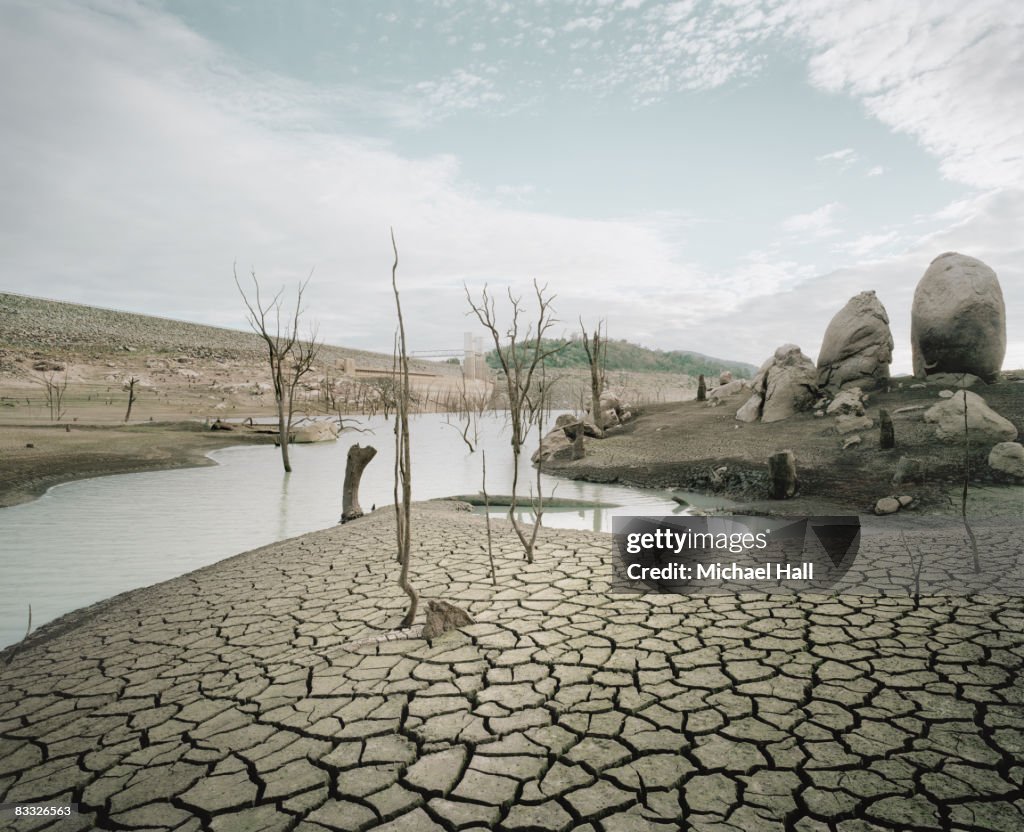
Climate Conditions is the global climate emergency worsens, its harmful consequences for human health and well-being will intensify. No one, anywhere in the world, is shielded from its effects; however, millions of people – particularly women, children, older adults, marginalized communities, displaced populations, individuals with existing health issues, and those experiencing poverty – face the greatest risks.
Shifts in climate conditions are influencing the spread and burden of disease, including by raising the incidence of heat-related sickness and fatalities; altering the distribution of infectious diseases, thereby increasing the likelihood of deadly outbreaks and pandemics; aggravating maternal and child health challenges; and amplifying the health toll from extreme weather events such as floods, droughts, wildfires, and severe storms.
The climate crisis also places immense pressure on healthcare systems, both by driving up the demand for medical care and by undermining their capacity to respond effectively. In addition, it is rapidly eroding access to fundamental needs like adequate nutrition, safe drinking water and sanitation, and clean air. According to recent World Bank estimates, climate change could generate additional health-related expenses of at least US$21 trillion in low- and middle-income countries by 2050 – roughly 1.3% of their expected GDP.
If climate change continues unchecked in Climate Conditions, achieving the global objective of reducing poverty will become increasingly difficult. According to a recent World Bank analysis, climate change could force an extra 132 million people—over half residing in Sub-Saharan Africa and South Asia—into extreme poverty by 2030, with 44 million of them affected primarily by health-related consequences.
Read more about the Importance of Financing
Read more about Human Activity
As the world’s largest provider of climate finance and the leading supporter of health systems, the World Bank is dedicated to boosting its investments in climate-health initiatives. Through its Climate Conditions and Health Program, it is embedding Climate Conditions into its $30 billion health portfolio, which is currently active in more than 100 nations.
The World Bank is helping countries to:
- Enhance health systems so they can forecast, detect, prepare for, and respond to climate hazards and emergencies. This includes developing climate-informed surveillance and early-warning mechanisms, expanding the health workforce’s expertise in climate-health, and making healthcare facilities resilient to climate Conditions impacts.
- Shift health systems toward low-carbon, high-quality care, for example, by adopting clean, renewable energy for facilities and vehicles, and using low-carbon pharmaceuticals and medical devices. This shift is crucial because, while the health sector is highly exposed to climate risks, it also contributes significantly to the problem—responsible for around 5% of global greenhouse gas emissions.
- Ecosystems are groups of living organisms—such as plants, animals, and microorganisms—that interact with one another and with their physical surroundings.¹ Humans rely on ecosystems for numerous resources and services, including food, water, clean air, raw materials for construction, and opportunities for recreation. Ecosystems can range in size from large ones, like the area around Yellowstone National Park,² to something as small as a single decomposing log. They can overlap, exist within one another, or form parts of larger systems. These links between ecosystems mean they depend not only on the species within them but also on each other.
- Climate change influences ecosystems in many different ways. Climate shapes plant growth, animal behavior, the success of various species, and the relationships they have with the physical environment.³⁴ When habitats face shifts in temperature, rainfall patterns, and other environmental conditions, the species living there are directly affected. While every region of the United States is feeling the impacts of climate change, the type and severity of those impacts differ depending on the location and ecosystem.⁵
- Tackle the underlying drivers of climate change and their effects on health by collaborating across sectors to scale up initiatives such as One Health, water, sanitation, hygiene improvements, and energy efficiency measures.
The World Bank has already carried out substantial climate-health projects in more than 100 countries, with nearly 60% of the funding directed toward adaptation measures like urgent nutritional aid, disease surveillance, and the establishment of emergency operations centers. Examples include:
- Indonesia: In collaboration with the Asian Development Bank, the Asian Infrastructure Investment Bank, and the Islamic Development Bank, we are co-financing $4 billion to support the country’s ambitious health system transformation plan. The funding includes energy-efficient medical and lab technologies and telemedicine services to maintain care during climate shocks while cutting emissions. This will benefit approximately 273 million people, including over 300,000 health professionals and volunteers.
- Sierra Leone: We are facilitating the purchase of low-carbon, energy-saving medical equipment and the climate-smart renovation, construction, and solar powering of health facilities. Guided by a Climate and Health Vulnerability Assessment, these upgrades will ensure resilient, high-quality essential care for roughly one-third of the population.
- Nigeria: Using a Sector-Wide Approach with other donors, we are aiding the government’s integration of climate considerations into health sector reforms. Our contributions include solarizing infrastructure, supporting climate-health policy planning and execution at both national and state levels, and increasing financial protection for populations at high climate risk. Alongside strengthening health assets, governance, and readiness, the initiative will directly improve access to quality care for 40 million people.
Many people are taking steps to help ecosystems adjust to the effects of climate change or reduce its impacts. For instance, national government agencies responsible for managing the country’s natural resources are now including climate change considerations in their policies and plans. At the community level, numerous organizations are protecting habitats and rehabilitating ecosystems that have previously been harmed or disrupted.
As the climate shifts, some species will cope by altering their behaviors, physical traits, or internal processes. Others will be unable to adjust. Consequently, climate change may cause certain populations to grow, shrink, or disappear entirely. These shifts can influence the overall diversity of life in a given area.
Plants and animals might also relocate to new geographic areas in response to changing climate patterns. Variations in temperature and water availability have already modified the ranges of numerous species. In the United States, rising temperatures have prompted some terrestrial animals to migrate northward—generally toward cooler regions—by an average of about 3.8 miles per decade. Certain marine species have shifted even farther, moving north at rates exceeding 17 miles per decade.
Many plants and animals depend on natural signals—such as shifts in temperature and moisture levels—to initiate certain stages of their life cycles. With climate change altering these signals, they may change at different speeds, or in some cases, not change at all. This can cause species that rely on each other during specific times of the year to fall out of alignment.
For instance, plankton serve as a vital food source for young fish, but they tend to respond more rapidly to rising temperatures than the fish do. As a result, plankton may no longer be plentiful when the developing fish need them most. Similarly, if a bird migrates on the same schedule each year, it might arrive to find that, because of warmer conditions, its primary food supply has emerged too early and is already gone.
Climate change is altering how species and populations interact with their surroundings and with each other. These effects can ripple through entire ecosystems.
For instance, in some regions, climate change is driving the spread of non-native, or invasive, species. An invasive species is one that originates outside an area and becomes established there. Such species can displace native plants and animals, introduce new illnesses, and cause other disruptions. These shifts can lead to serious environmental and economic consequences.
As ocean temperatures rise, invasive fish like the tropical lionfish are projected to migrate farther north along the Atlantic coastline, posing a threat to native marine life. This also has risks for humans, as lionfish carry venom and can deliver painful stings.
Climate change can also disrupt food webs—the interconnected network of feeding relationships within an ecosystem. At the base of a food web are producers such as plants and plankton, which serve as food for other organisms higher up in the chain. Changes to any level of the food web can impact the entire system and may even influence other ecosystems. Using the earlier example, if juvenile fish in estuaries struggle to find enough food, predators in the open ocean that rely on those fish could also suffer.
Climate change is altering several essential services that ecosystems supply to human societies. For instance, ecosystems yield a variety of foods for people. Shifts in climate—such as prolonged droughts and extreme heat—can influence both the supply and quality of certain foods, as well as the capacity of farmers to cultivate specific crops.
Ecosystem services like carbon capture and storage are also at risk. Forests are a vital component of the carbon cycle, taking in carbon dioxide from the atmosphere and storing it within roots, soil, and forest litter. However, climate-related increases in wildfires, floods, invasive pests, and plant diseases can reduce an ecosystem’s ability to deliver this crucial function.
For region-specific illustrations of climate change effects, refer to the National Climate Assessment.





